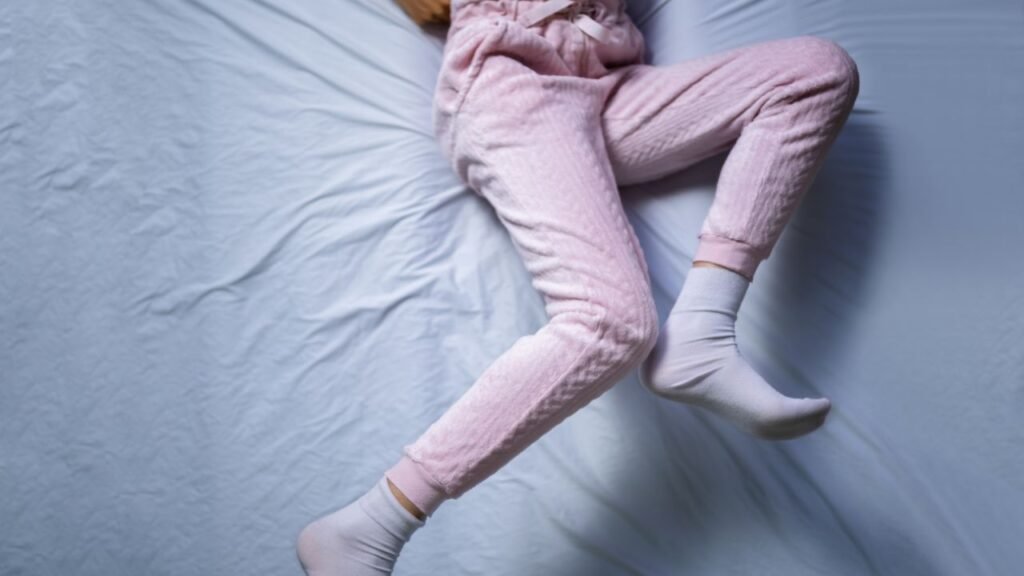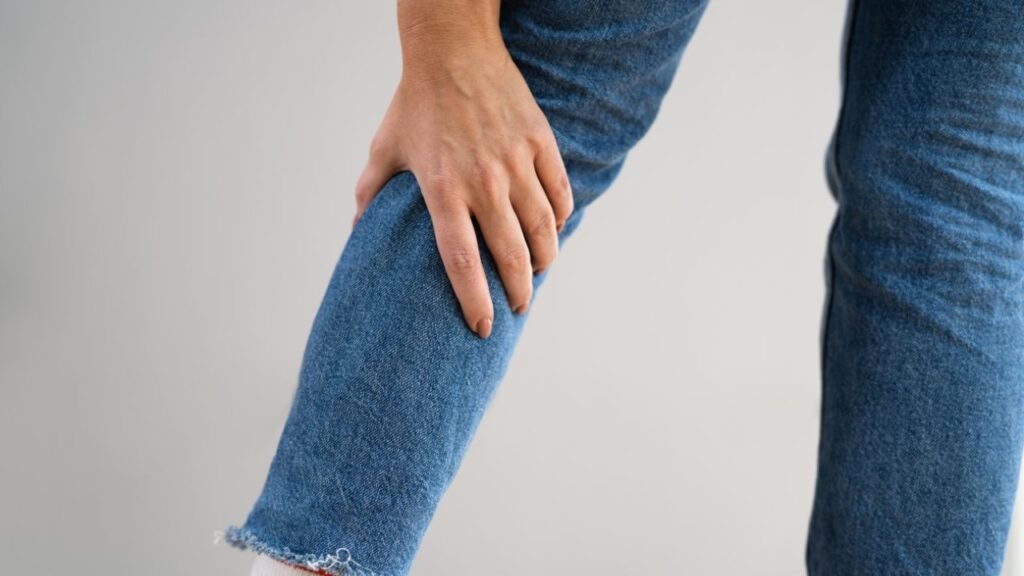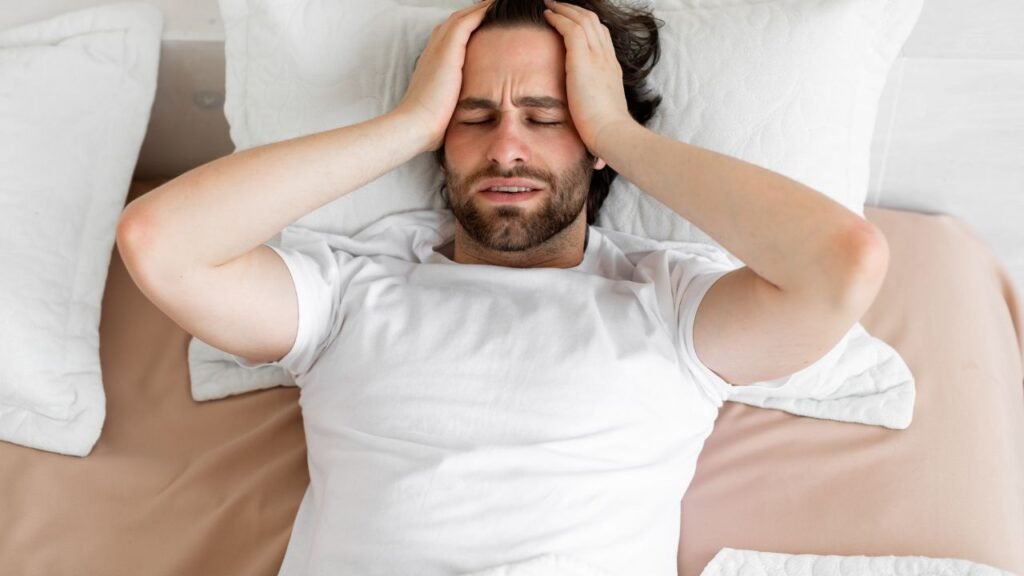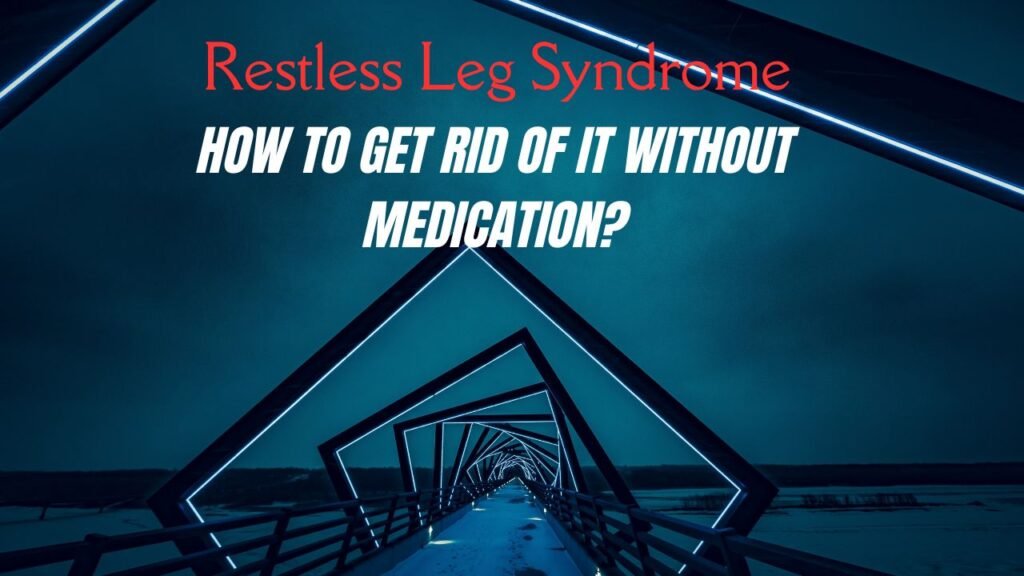Table of Contents
Introduction to Restless Leg Syndrome
Restless Leg Syndrome: You may be familiar with Restless Leg Syndrome (RLS) if you have ever felt an unexpected, intense need to move your legs when you’re trying to unwind or go to sleep.
RLS is debilitating for many– interfering with daily life, leading to tiredness and irritation. Though the condition is widely experienced, the good news is that it does not need to be treated with drugs at every instance.
Here though, are some effective home remedies you can do for restless legs syndrome to relieve your symptoms and return you to the sleep and comfort you deserve.
Restless leg syndrome is a condition associated with changes and imbalances in your body– that means you don’t have to be subject to a lifetime of medication.
This article looks at what you can do to ditch it without drugs, including simple lifestyle changes, and natural therapies and why it works.
Whether you want to reduce the symptoms or simply escape medication these alternatives eradicate the rush of living a better and calmer life instead of being restless.
What is Restless Leg Syndrome (RLS)
Before we look into home remedial measure, let us first know what Restless Leg Syndrome (RLS) is all about.
Restless legs syndrome (RLS) is a movement and sleep disorder that causes you to have an unavoidable desire to move your legs — with unpleasant sensations that can feel like tingling, itching, or crawling.
These symptoms usually happen when you are sitting or lying down, which makes the nighttime especially troublesome.
What is restless leg syndrome and what are the symptoms of restless leg syndrome?
Restless Leg Syndrome: Here are some common symptoms experienced by people who have RLS:
An uncontrollable urge to move your legs, particularly when you are sitting or lying down.
An urge to move your legs, plus: Uncomfortable or unusual feelings in the legs, from mild itching or tingling to aching or throbbing.
Symptoms tend to get worse in the evening or at night leading to difficulty falling asleep or staying asleep.
One custom method of symptom relief is movement: walking, dancing, stretching.
RLS: What Causes the Condition?

Although the exact etiology of RLS is not clearly understood, multiple factors are associated with this disorder. Below are some of the most common causes of restlesslegsyndrome:
Heredity: Family history is common among individuals diagnosed with RLS, which implies a genetic component [3].
Iron deficiency: Very low concentrations of iron in the brain can disrupt dopamine production which is involved in regulating muscle movement.
Chronic diseases: Some chronic diseases, such as kidney failure, diabetes, and Parkinson’s disease, can cause RLS.
Pregnancy: Especially in the third trimester, hormonal changes during pregnancy can cause RLS.
Medications: Some medications, such as antihistamines and antidepressants, can either trigger or worsen symptoms of RLS.
Having gone through the basics, let us now discuss natural remedies and lifestyle modifications that can help with managing RLS and alleviate symptoms at the same time without the intake of any medication.
Supplement with Iron and Magnesium
Restless leg syndrome mostly comes from iron deficiency and causes. Dopamine is the key to smooth and coordinated muscle movement, and when there is not enough iron in the body, the brain has a rough time producing this neurotransmitter.
Likewise, magnesium is a muscle relaxant mineral, and a magnesium deficiency can exacerbate RLS.
Natural Ways to Get More Iron and magnesium
Iron-rich foods: Add iron-rich food to your diet, such as red meat, spinach, beans, lentils, tofu and fortified cereals. Combining these foods with a vitamin C source (such as oranges or bell peppers) can increase iron absorption.
Dietary sources of magnesium: Include foods like nuts, seeds, leafy green vegetables, bananas, and whole grains that have magnesium content in their composition.
However, if you continue to have RLS symptoms after making dietary changes, it may be time to discuss with your doctor the possibility of testing your iron levels in order to prescribe supplements that could be beneficial.
Stretching and Exercise
To prevent restless leg syndrome naturally, then, exercise is one of the absolute best methods to practice. Exercise will alleviate symptoms, particularly if you do some stretches prior to bedtime.
Stretching: Stretching the body can loosen up the muscles, making them less likely to want to move around during the night.
Easy Moves to Relieve Restless Leg Syndrome
Hamstring Stretch: Lying down, straightening one leg and gently bring towards you. Perform it for 20-30 sec each leg.
QUADS: Stand on one foot, pull the other foot behind you towards your glutes, holding onto your foot with your hand.
It has also been observed that yoga can help reduce the symptoms of RLS. This encourages flexibility, relaxation and better circulation, which can all help alleviate RLS naturally.
Improve Sleep Hygiene

Good sleep hygiene is important because RLS symptoms are often worse at night. Getting into a regular relaxing bedtime routine can help you sleep better and avoid your RLS flares.
Guidelines to Follow for Improved Sleep Hygiene
Wind down a little before bedtime: Read, listen to slow music, do breathing exercises, etc.
Create a conducive sleeping environment: Make sure your bedroom is cool, quiet, and dark to encourage restorative sleep.
Avoid caffeine and alcohol: Because caffeine and alcohol can diminish your sleep quality, avoid drinking these two beverages in the hours leading up to bedtime.
Use Heat or Cold Therapy
Therapeutic heat and cold can work to alleviate some of the pain and discomfort associated with RLS. While heat can help relax and relieve muscle tension, cold compresses can help numb the area and prevent inflammation.
Using Heat or Cold For RLS Relief
Cold therapy: Use an ice pack in a cloth for 15-20 minutes on the area that is swollen and painful.
Heat: heat up some towels and lay over your legs, or have a warm bath before sleep[28];
Try each way out to discover which method more efficiently alleviates your symptoms.
Stay Hydrated
Muscle cramps and twitching can make restless leg syndrome worse, and dehydration can worsen those symptoms.
A good recommendation for consumption is about 30ml per kiliogram of body weight per day.
Preferably spread out, since drinking enough water throughout the day is essential to prevent leg discomfort and minimize the body deficiency that comes with RLS.
How to Stay Hydrated
Restless Leg Syndrome: Consume 8-10 cups of liquid, including water, daily (more if you are active or reside in a hot environment).
Especially refrain from drinking excessively over caffeine or liquor: both dehydrate the system.
Try some relaxation methods
Another trigger for restless leg syndrome is stress and anxiety. During periods of stress, your muscles are likely to tense up which can bring on or aggravate RLS symptoms. Integrating strategies for relaxation into your daily life may go a long way in quieting your mind and constraining muscle tightness.
Effective Relaxation Methods
Deep breathing: Inhale air for 4 seconds then hold your breath for 4 seconds, and after that exhale for 4 seconds. Repeat for several minutes.
Progressive muscle relaxation: Tighten and relax various groups of muscles in your physique to relieve stress.
Meditation: Either mindfulness meditation or guided meditation can help lower anxiety and better promote relaxation.
Avoid Tight Clothing
Clothing that is too tight, especially around the waist or legs, can make restlessness in leg syndrome feel worse. It limits blood circulation and may cause additional discomfort or restlessness in your legs.
How to Avoid Tight Clothing
Wear hover clothes to bed and when resting.
Stay away from tight blood flow-crossing socks or pants that rub the skin.
Try Essential Oils
Some essential oils such as lily and chamomile have ideal properties to calm down and relieve muscle spasms. Can relieve the discomfort of restless leg syndrome when diffused, or applied topically.
How to Use Essential Oil:
Lavender oil: An essential oil that has a calming effect, which you can use in a diffuser in your bedroom or just apply to your legs before you go to sleep.
Chamomile Oil: Chamomile oil also reduces inflammation and helps relax the muscles of the legs.
Final Thought on How to Eliminate Restless Leg Syndrome Naturally

Restless Leg Syndrome (RLS) can be a frustrating condition to live with, but sometimes needing medication to find relief does not have to be the answer.
With these natural treatments, such as diet, exercise, sleep hygiene, and relaxation methods, you can treat yourself for almost all symptoms and sleep better.
From upping the intake of iron to doing stretches or just drinking some water: these are all natural solutions to banish restless leg syndrome, without medication.
Also, everyone experiences RLS differently so finding what works best for you will come with trial and error.
In case your symptoms do not go away or become worse, I recommend checking with your health care provider to rule out health problems.
Implement these techniques today, and wave goodbye to the legs that keep you up at night.


